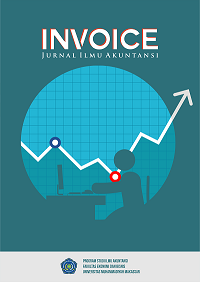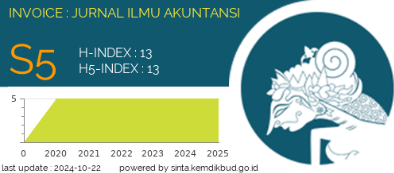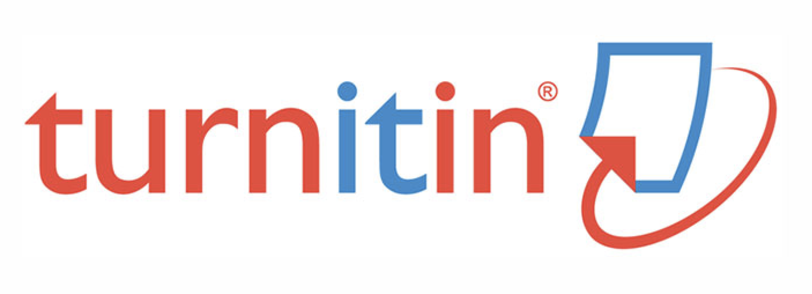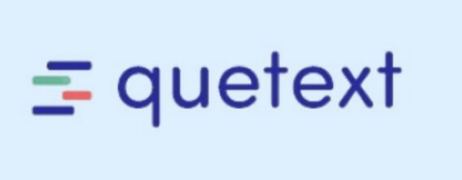PENGARUH PERTUMBUHAN PENJUALAN TERHADAP PROFITAILITAS PADA PT.GUDANG GARAM TBK
DOI: https://doi.org/10.26618/inv.v2i2.4115
Abstrak
Purpose of this research is to know the influence of sales growth to profitability in PT. Gudang Garam Tbk. The population of this research is the financial report of sales growth and net profit in PT. Gudang Garam TBK, for 10 years IE 2009-2018. The sample will be the financial report of sales growth and net profit in PT. Gudang Garam, for 5 years which is 2014 – 2018. This is an associative research with sampling techniques that is purposive sampling. The test results showed that there was no significant influence between sales growth on profitability at PT Gudang Garam Tbk. With a value of R2 of 16.1%.
Referensi
Andrayani, 2013 Dasar-Dasar Manajemen Keuangan. Alih Bahasa: Ali Akbar Yulianto. Edisi 11. Buku 1. Jakarta: Salemba Empat.
Agus Sartono (2010) Kebijakan Pendanaan dan Restruksi Perusahaan. Jakarta: PT Gramedia Pustaka.
Agus Sartono, (2013) How Firm Characteristics Affect Capital Structure: An International Comparison. The Journal of Financial Research. Vol. XXII, NO.2 Pages 161-18.
Elfianto Nugroho (2012) Analisis Pengaruh Likuiditas, Pertumbuhan Penjualan, Perputaran Modal Kerja, Ukuran Perusahaan dan Leverage Terhadap Profitabilitas
Perusahaan (Studi pada Perusahaan Manufaktur yang Terdaftar pada BEI padaTahun 2007 – 2011.
Fabozzi (2011) Understanding Profitability. IOWA State University.
Harahap (2008) Manajemen Keuangan Teori dan Aplikasi. Edisi 4. Yogyakarta: BPFE.
Harahap, 2011 Pokok-Pokok Analisis Laporan Keuangan. Edisi Pertama. Cetakan Kedelapan. Yogyakarta: BPFE.
Harahap, 2013 Dasar-Dasar Ekonometrika. Jakarta: Erlangga. Damodar N. Gujarati, Dawn C. Porter. Basic Econometrics. 5th Edition. New York: McGraw-Hill.
Inta Budi Setyanusa (2013) Pengaruh Likuiditas dan Struktur Modal Terhadap Profitabilitas (Studi Kasus Pada Perusahaan Manufaktur Sektor Food & Beverage Yang Terdaftar Di Bursa Efek Indonesia Periode 2007-2012).
Irham fahmi (2012) Manajemen Investasi. Alih Bahasa: Tim Alih Bahasa Salemba Empat. Buku 2. Jakarta: Salemba Empat.
kasmir, (2014) Manajemen Keuangan. Jilid 2 . Edisi 9. Binarupa Aksara.
Kennedy dkk., (2013) Dasar dasar Pembelanjaan Perusahaan. Edisi 4. Yogyakarta : Bagian Penerbitan FE.
Myers dan Majluf (2017) Pengaruh Tangibility, Pertumbuhan Penjualan, Ukuran Perusahaan Terhadap Struktur Keuangan. Jurnal Bisnis dan Akuntansi . Vol 10 No. 1.
Pagano dan Schivardi, 2013 Pengaruh Profitabilitas, Pertumbuhan Penjualan, Struktur Aset dan Tingkat Pertumbuhan Terhadap Struktur Modal. Jurnal Ilmu dan Riset Akuntansi. Vol 3 No 7.
Rudianto (2014) Pengaruh Profitabilitas, Tingkat Pertumbuhan Perusahaan, Likuiditas, Dan Pajak Terhadap Struktur Modal Pada Sektor Pariwisata. E Jurnal Manajemen Unud, Vol. 5 No 6
Sudjiono, (2010) Dasar-dasar Manajemen Keuangan. Edisi 11 Buku 2. Jakarta : Salemba Empat.
Unduhan
Diterbitkan
Terbitan
Bagian
Lisensi
Authors who publish with Invoice: Jurnal Ilmu Akuntansi agree to the following terms:
-
Copyright Ownership
The copyright of all articles published in this journal remains with the author(s). However, the authors grant Invoice: Jurnal Ilmu Akuntansi the right of first publication with the work simultaneously licensed under a Creative Commons Attribution 4.0 International License (CC BY 4.0). This license allows others to share, copy, redistribute, adapt, and build upon the work for any purpose, even commercially, as long as proper credit is given to the original author(s) and the source. -
Licensing and Access
Invoice: Jurnal Ilmu Akuntansi provides immediate open access to its content on the principle that making research freely available to the public supports a greater global exchange of knowledge. All published materials are available freely without subscription or payment and can be accessed, downloaded, and reused by any user provided that appropriate attribution is given. -
Permission for Reuse
For uses not covered by the CC BY 4.0 license, such as commercial reprints, translations, or any form of adaptation without clear attribution, users must obtain written permission from the editorial team. Requests for such permissions can be directed to the editorial office at: [invoice@unismuh.ac.id]. -
Plagiarism and Originality
Authors are responsible for the originality of their submissions. All articles are screened for plagiarism using appropriate tools before acceptance. Manuscripts found to contain unoriginal content or infringing materials will be rejected or retracted as per journal policy.














